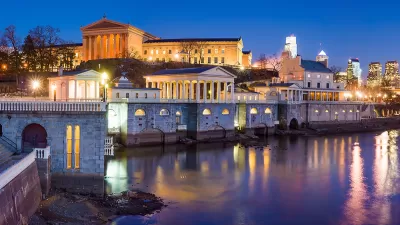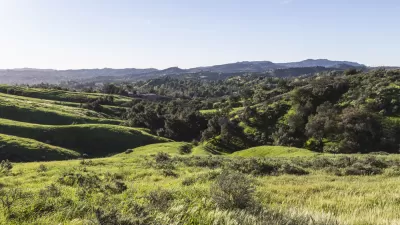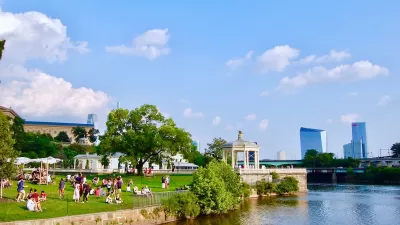Architecture critic Inga Saffron describes a new master plan for Philadelphia's signature piece of open space as "important" and "welcome," but still finds that it falls short in addressing some of the park's critical needs.

Fairmount Park has never managed to become the same kind of go-to, citywide leisure destination that Central Park is for New York City, according to architecture critic Inga Saffron. "While the Schuylkill's banks are often jammed with people, the crowds quickly thin as you push into the hinterlands, the big swaths of greenery known to park officials (but few others) as East and West Fairmount Park."
"Unlike Central Park, the bifurcated park bordering the Schuylkill between the Art Museum and the Falls Bridge is not all that convenient to most Philadelphians. The city's densest rowhouse neighborhoods lie far to the east, near the Delaware, and in South Philadelphia. Public transit access is poor. Even people living next to the park find the fragmented archipelago of niche spaces tricky to navigate."
With those limitations in mind, the Department of Parks and Recreation released a master plan for Fairmount Park. Saffron calls the report important, "as a demonstration of the Nutter administration's commitment to democratizing the city park system by improving access." Saffron also notes that the master plan "is the third major strategic plan produced in the last six years, thanks to funding from the William Penn Foundation."
But Saffron's coverage of the new plan also produces negative reviews of some of the plan's details, which she finds inadequate in addressing issues like funding (for instance, Saffron says it's "a shame the report did not have the courage to explore the possibility of a regional park tax").
FULL STORY: Changing Skyline: Fairmount Park plan is welcome, but it falls short

Planetizen Federal Action Tracker
A weekly monitor of how Trump’s orders and actions are impacting planners and planning in America.

Chicago’s Ghost Rails
Just beneath the surface of the modern city lie the remnants of its expansive early 20th-century streetcar system.

San Antonio and Austin are Fusing Into one Massive Megaregion
The region spanning the two central Texas cities is growing fast, posing challenges for local infrastructure and water supplies.

Since Zion's Shuttles Went Electric “The Smog is Gone”
Visitors to Zion National Park can enjoy the canyon via the nation’s first fully electric park shuttle system.

Trump Distributing DOT Safety Funds at 1/10 Rate of Biden
Funds for Safe Streets and other transportation safety and equity programs are being held up by administrative reviews and conflicts with the Trump administration’s priorities.

German Cities Subsidize Taxis for Women Amid Wave of Violence
Free or low-cost taxi rides can help women navigate cities more safely, but critics say the programs don't address the root causes of violence against women.
Urban Design for Planners 1: Software Tools
This six-course series explores essential urban design concepts using open source software and equips planners with the tools they need to participate fully in the urban design process.
Planning for Universal Design
Learn the tools for implementing Universal Design in planning regulations.
planning NEXT
Appalachian Highlands Housing Partners
Mpact (founded as Rail~Volution)
City of Camden Redevelopment Agency
City of Astoria
City of Portland
City of Laramie





























